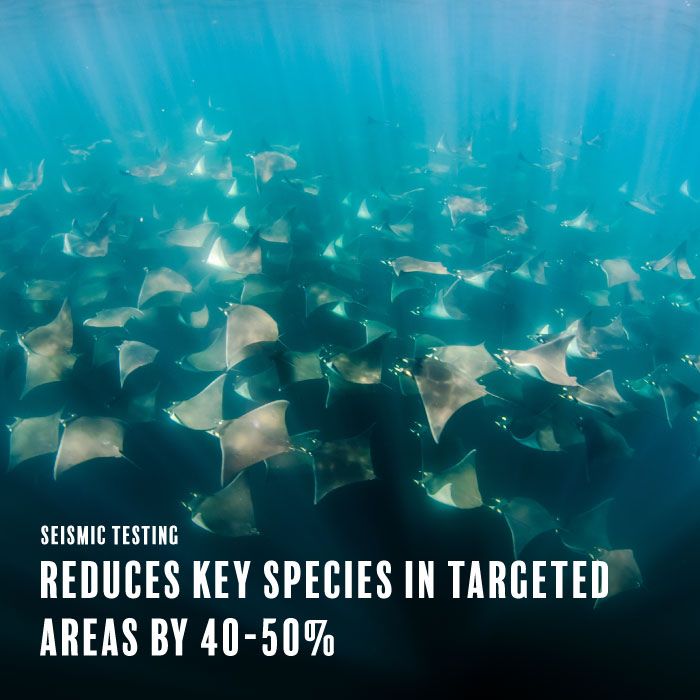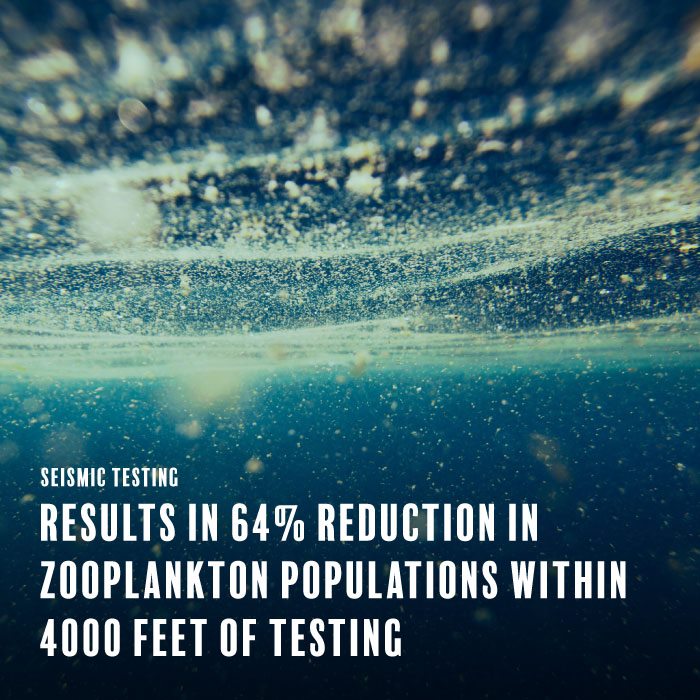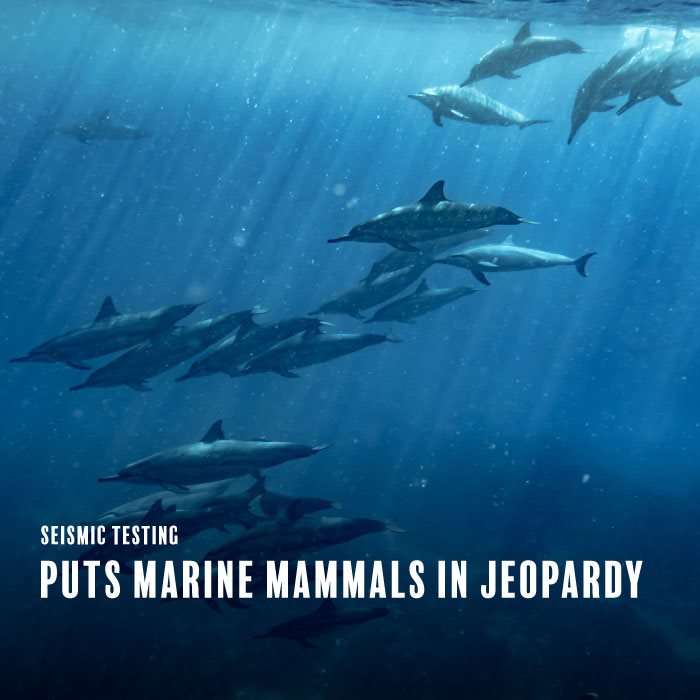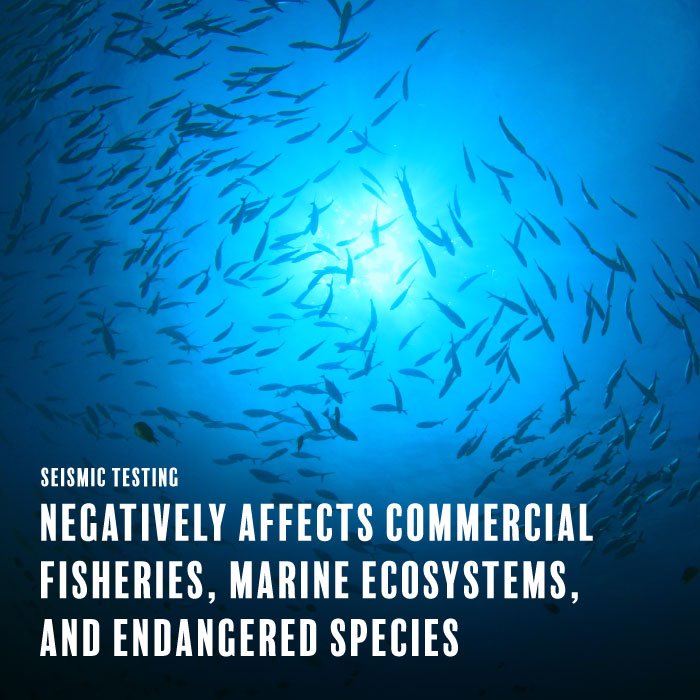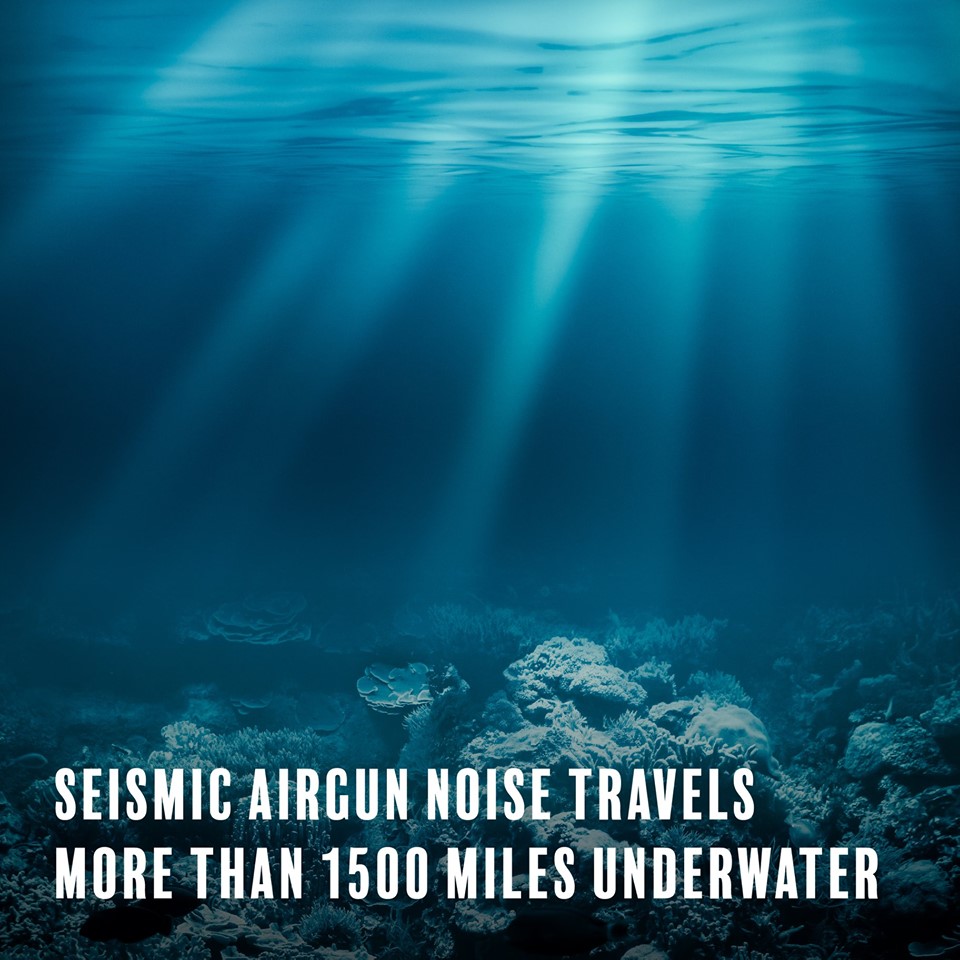What’s that sound?
We can tell you one thing: it’s not seismic testing! As you might have heard, the South Carolina Department of Health and Environmental Control recently opposed permits to begin seismic testing off our coast.
Seismic testing is a way to measure the geological makeup of the ocean floor and what lies below it. Air guns, or incredibly loud and strong horns, are deployed underwater and fire every 7-10 seconds. The echoes, or sound waves, created by these air guns are read by acoustic receivers above the water. All of this data can then be utilized to create an image of the landscape below the surface.
Ultimately, seismic testing is the first step in determining if an area has oil and gas reserves for potential offshore drilling. But it doesn’t come without a cost.
Air guns consistently fire for weeks or months on end, every 7-10 seconds. This sound is pretty loud, too. Each firing typically reads at 160-260 decibels. To put it in perspective, standing within 100 feet of a jet engine taking off reads at 160 decibels. At 165 decibels or more, humans can rupture their eardrum. Sounds this loud can also travel up to 1,500 miles from their initial location.
But how can this affect animals that call the ocean home?
Marine mammals, like whales and dolphins, are at particular risk. They rely on echolocation, a form of communication where they produce a series of whistles or sounds. Echolocation is a means for whales and dolphins to communicate, seek out food sources and navigate their environment. When these sound waves come into contact with another animal or object underwater, they echo off them before returning to the marine mammal. If seismic air gun firings are occurring, they can become significantly disoriented, inhibiting their ability to rely on echolocation for basic survival needs.
Some of the smallest (but most important) animals can also be significantly affected by seismic testing: zooplankton. Zooplankton represent anything from microscopic organisms to krill and jellyfish. Zooplankton are typically the initial food source for the underwater food chain. Unfortunately, a study has shown that zooplankton populations within 4,000 feet of seismic testing declined 64% – a significant loss. If zooplankton aren’t available for consumption, we risk a domino effect for all marine animals relying on zooplankton as a food source for survival.
Commercial fisheries also feel the impact of seismic testing. The sounds can scare away schools of fish; if testing occurs where fisheries seek a daily catch, then they risk coming home empty handed. Studies have shown that there’s a 40-50% reduction of key species in targeted areas, impacting the livelihoods of fishermen and the sustainable seafood industry as a whole.
Seismic testing can definitely lead to larger conversations, so keep yourself informed on its impact and other issues that are important to you!



